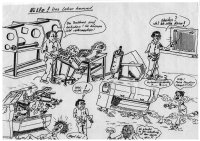Recorder
Introduction
|
The first film recorders developed by Hell are integrated drum scanner- recorder devices, which are usually called "scanners"
or "drum scanners". These were built by Hell from 1966. At that time, the scanned image data was corrected analogously and simultaneously exposed on film.
Later, the data has been digitized, but also immediately exposed as halftone dots on the recorder side. For reasons of reference,
the DC 300B appears again on this page.
The development of the recorders, which are separated from the scanner, began in the 1980s with the so-called DC 3000 family. The scanner and recorder are connected via an electrical shaft, which ensures synchronous operation and thus enables the synchronous feeding of the image data. Based on this concept, the scanner and the recorder have been further developed into a system scanner and system recorder. These devices work independently of one another, but it is now important to optimally adapt the scanner or recorder data rates to the possible data rates of the system computers. The last generation of film recorders is an internal drum image setter. Further developments to printing plate setters (computer-to-plate) took place and still take place (2020) at Heidelberger Druckmaschinen AG. This is the final step towards filmless reproduction.
A one hour lasting training course about scanner technology is available on DVD. Please consider about a donation and contact us by the contact form.
Here the first 4- minutes sample data: |
|||||
|
Chromagraph
Gradation und colour correction German (8,7 Mbyte) |
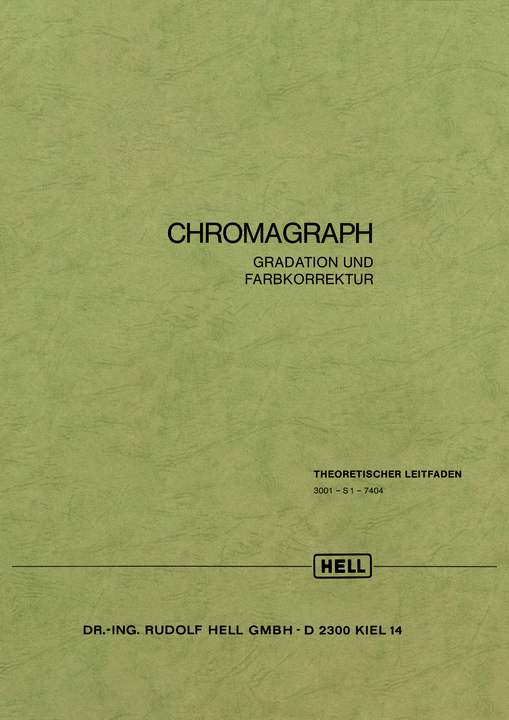 |
||||
| Chromagraph DC 300 B (1975) | 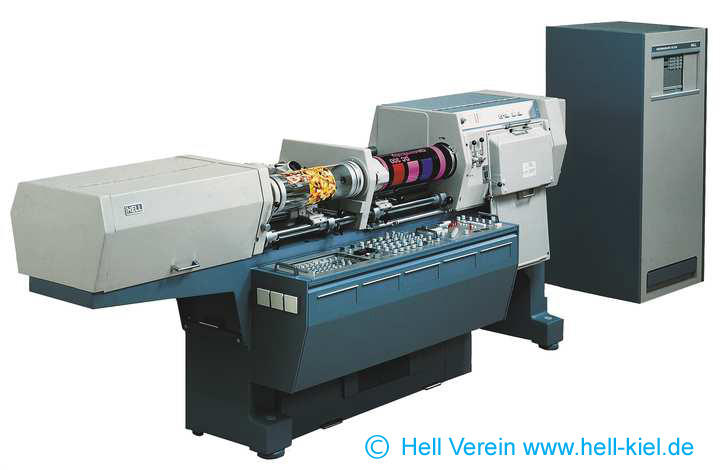 |
||||
|
Product family:
ChromaGraph DC 3000
External drum recorder
|
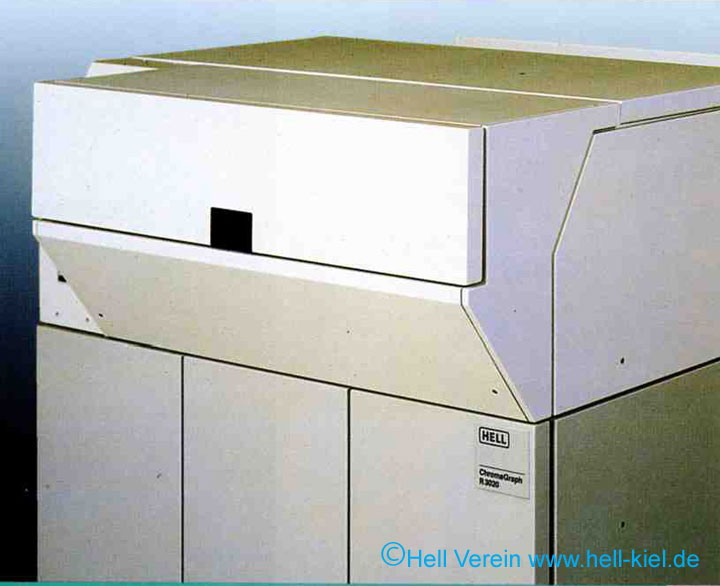 |
||||
|
Internal drum recorder
|
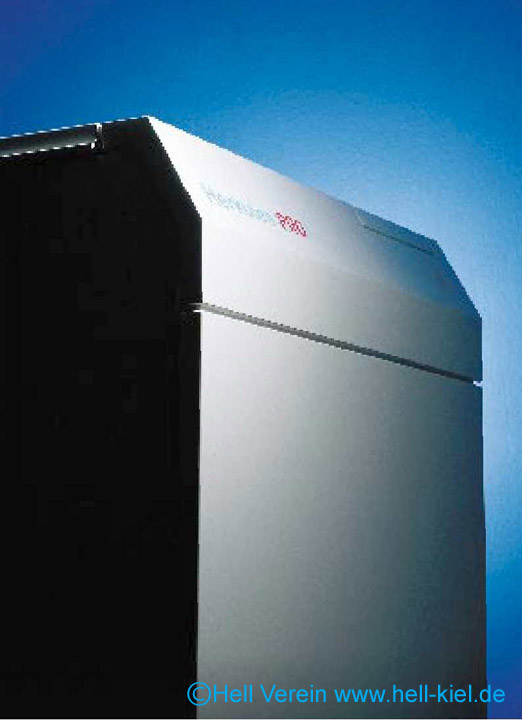 |
||||

